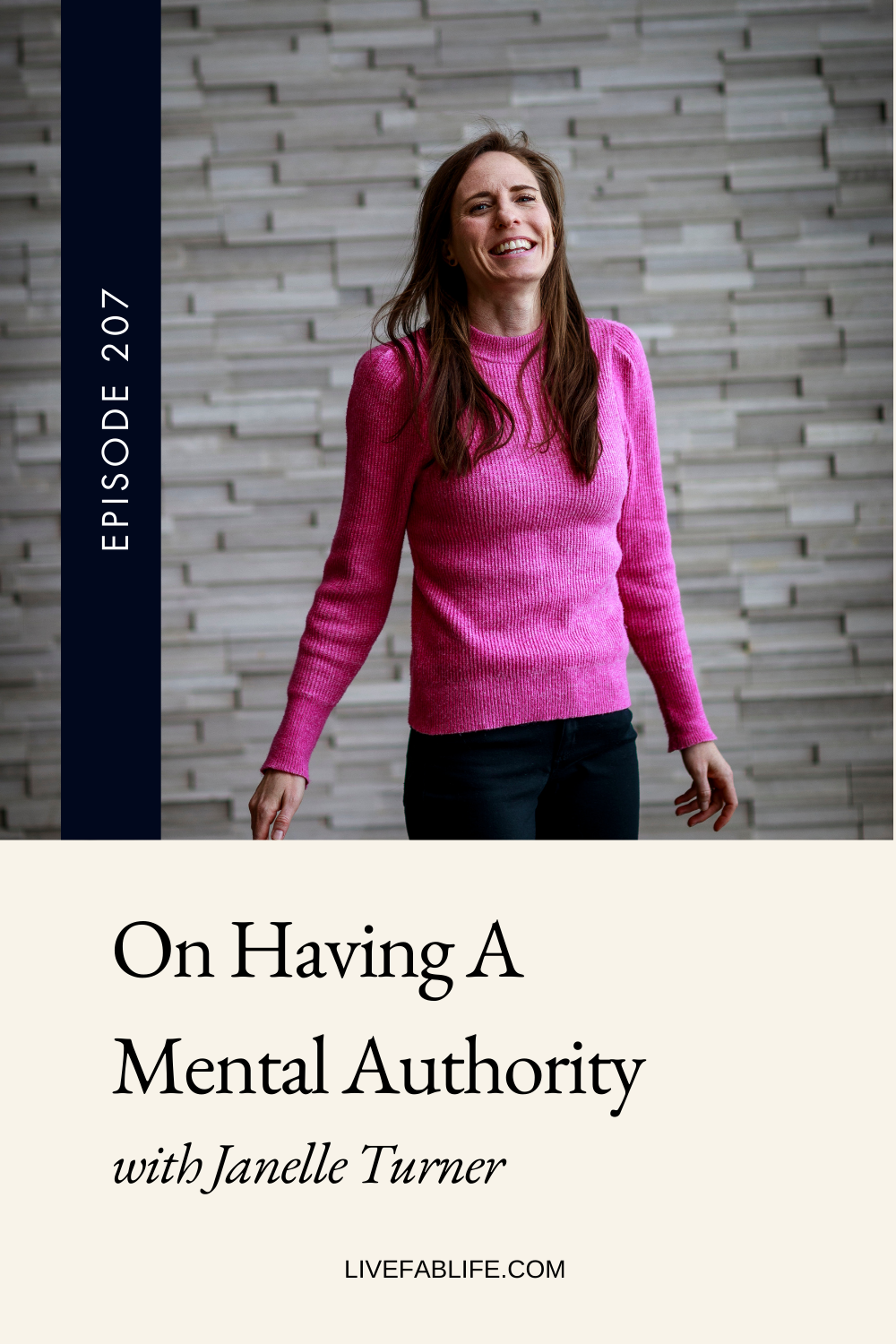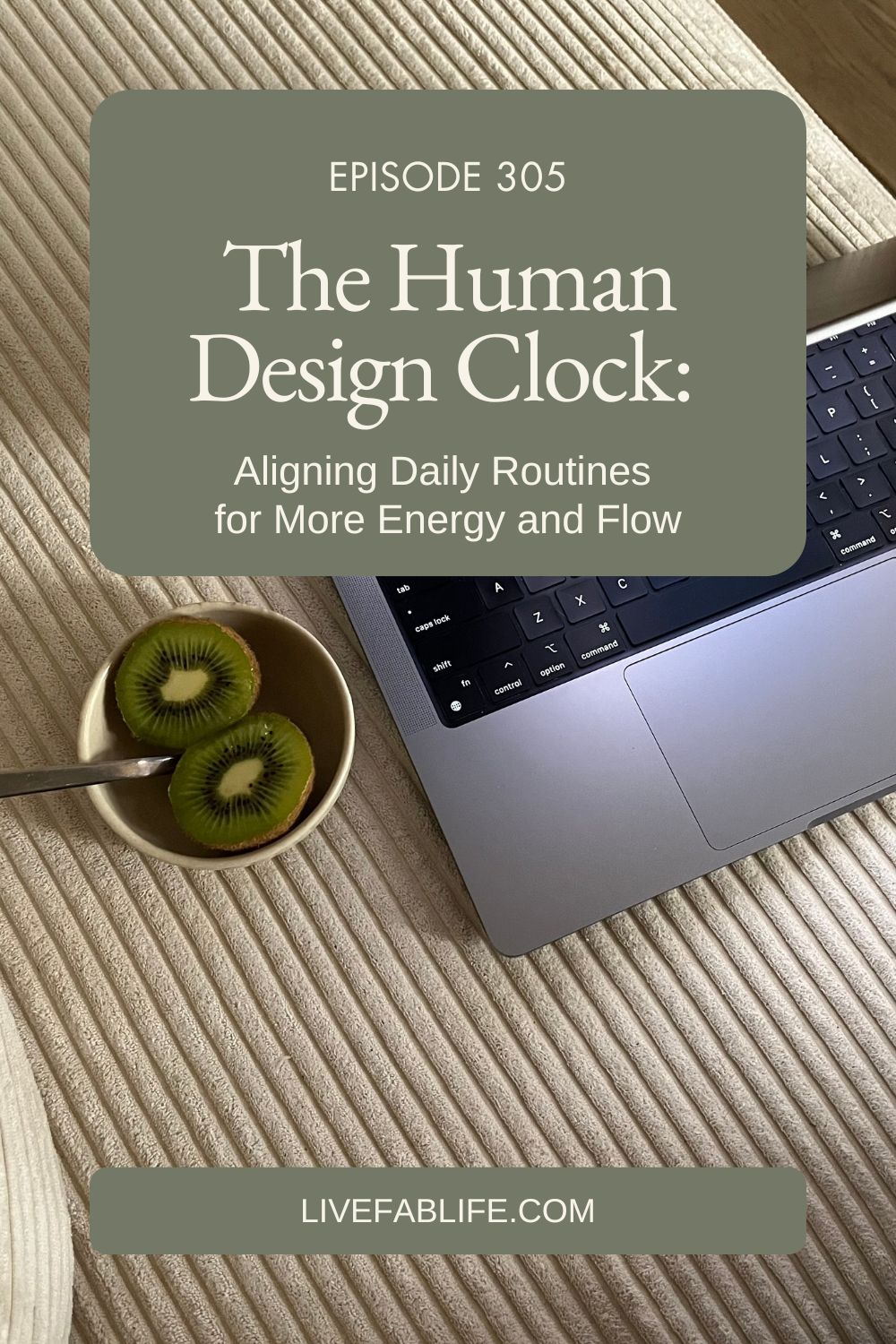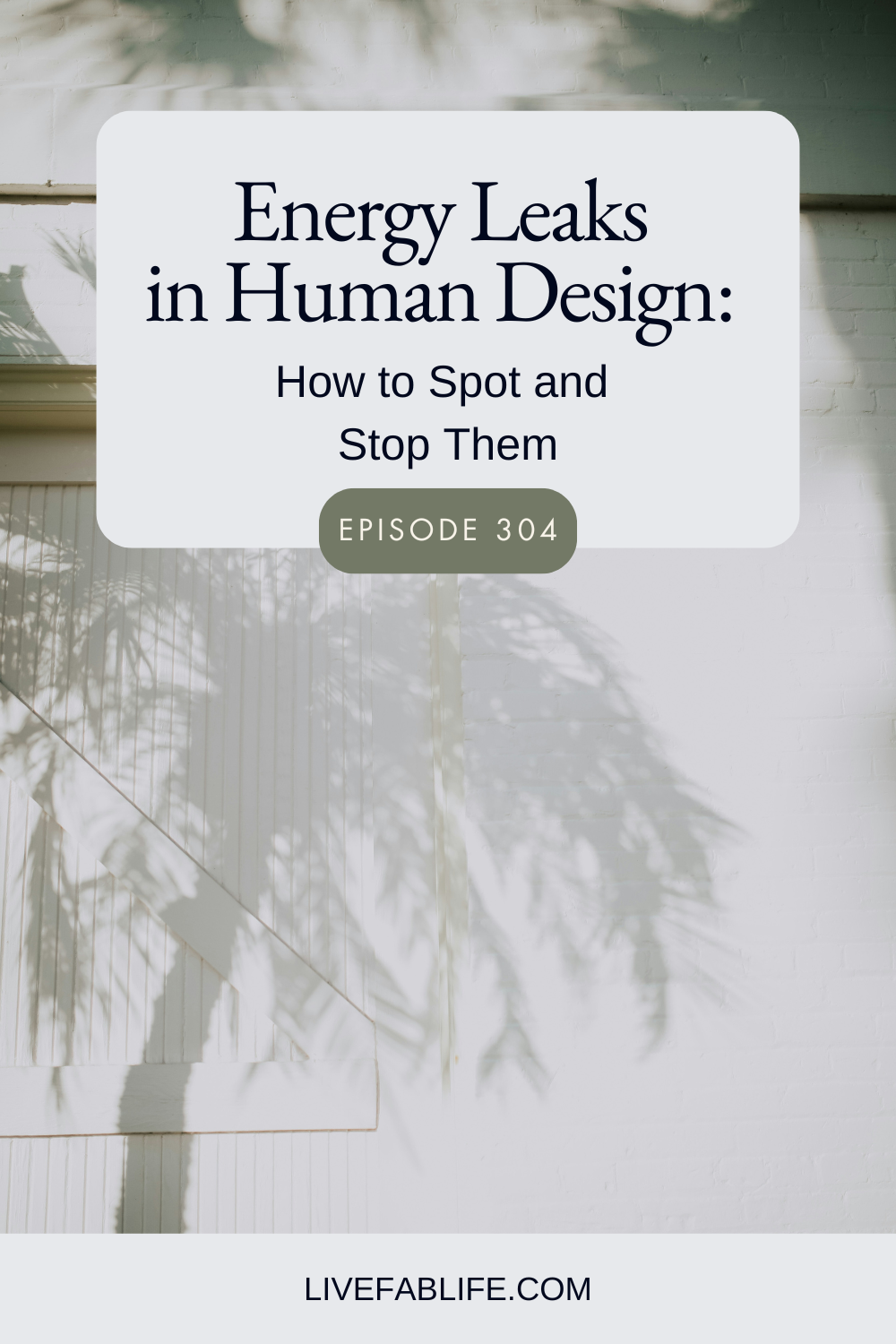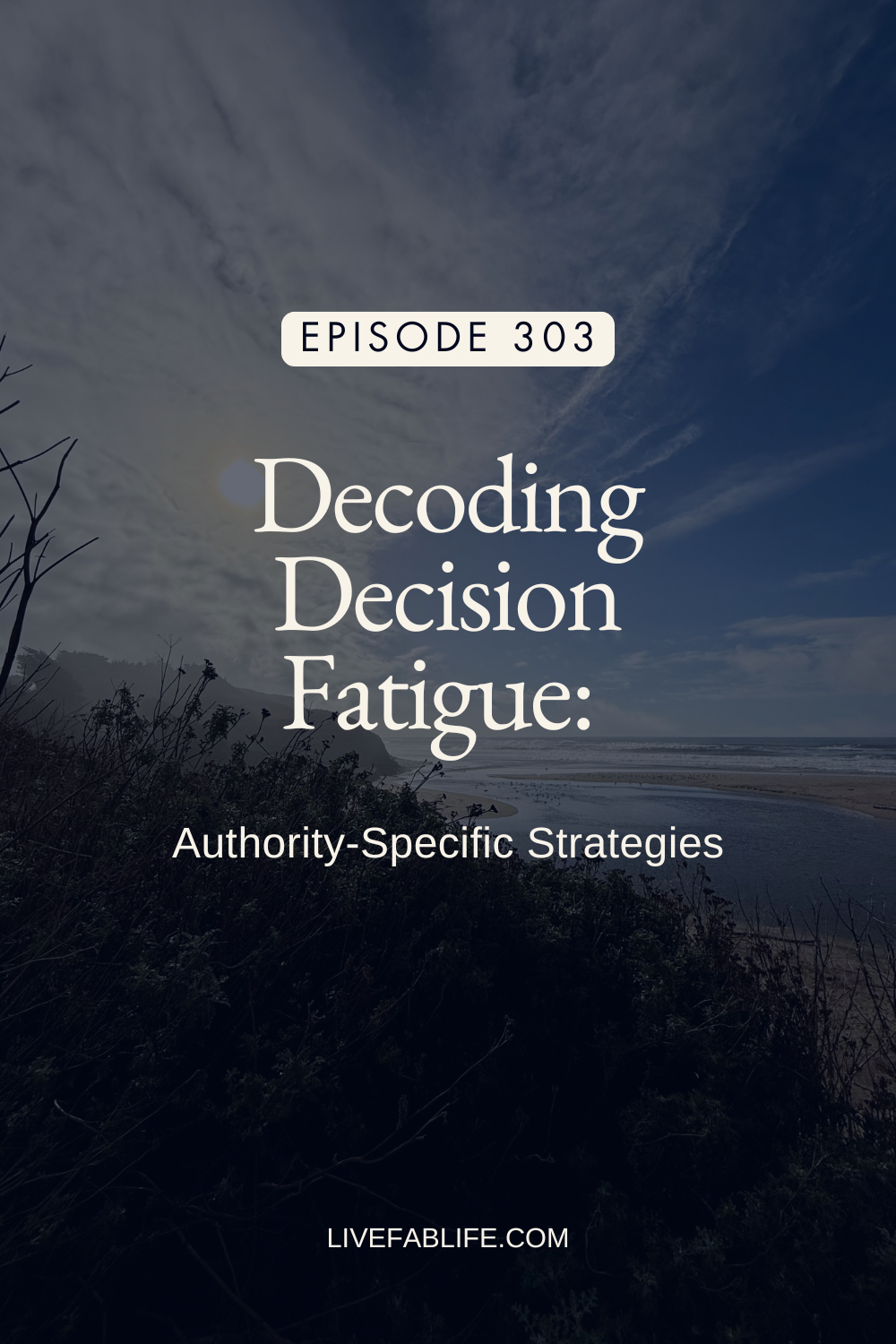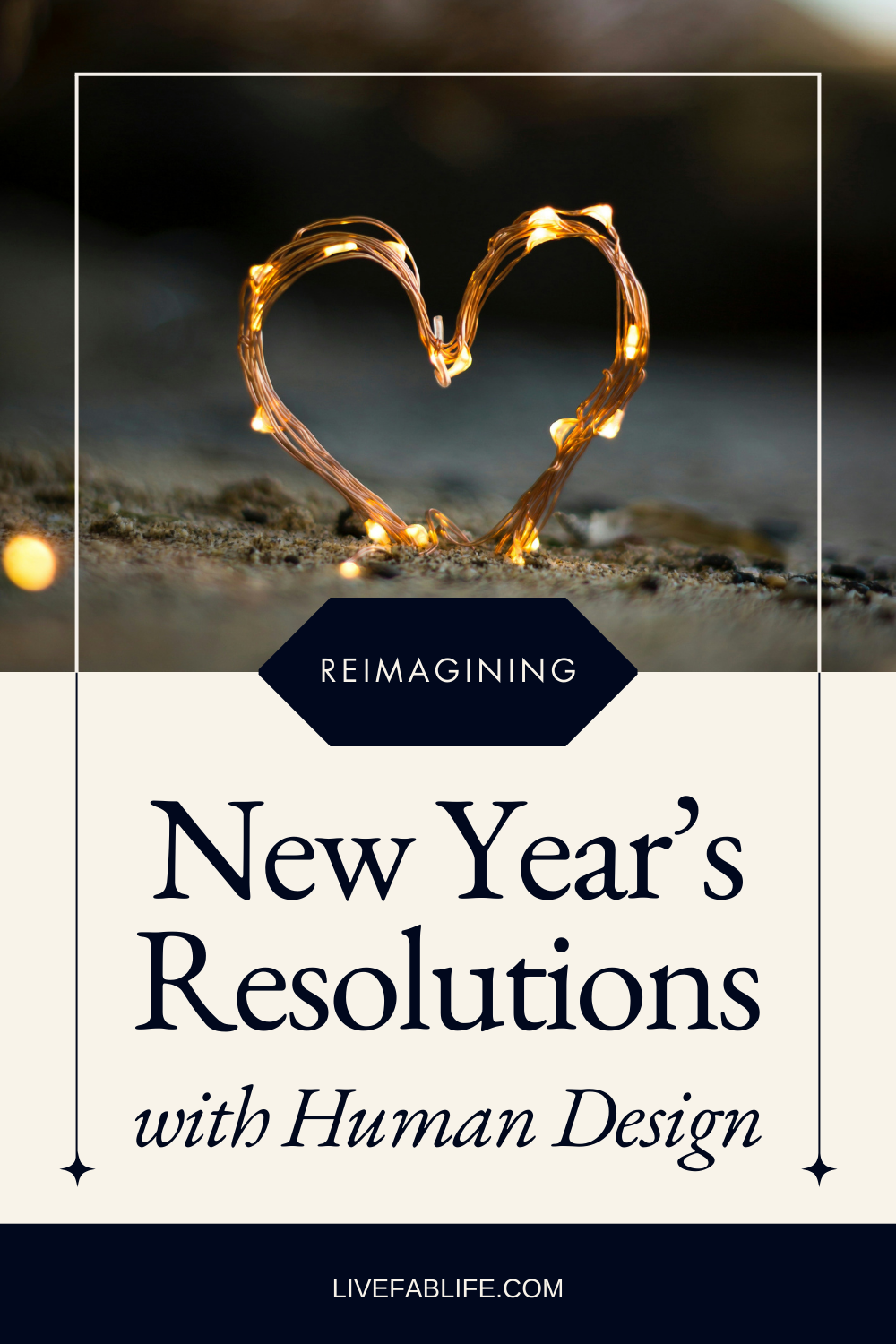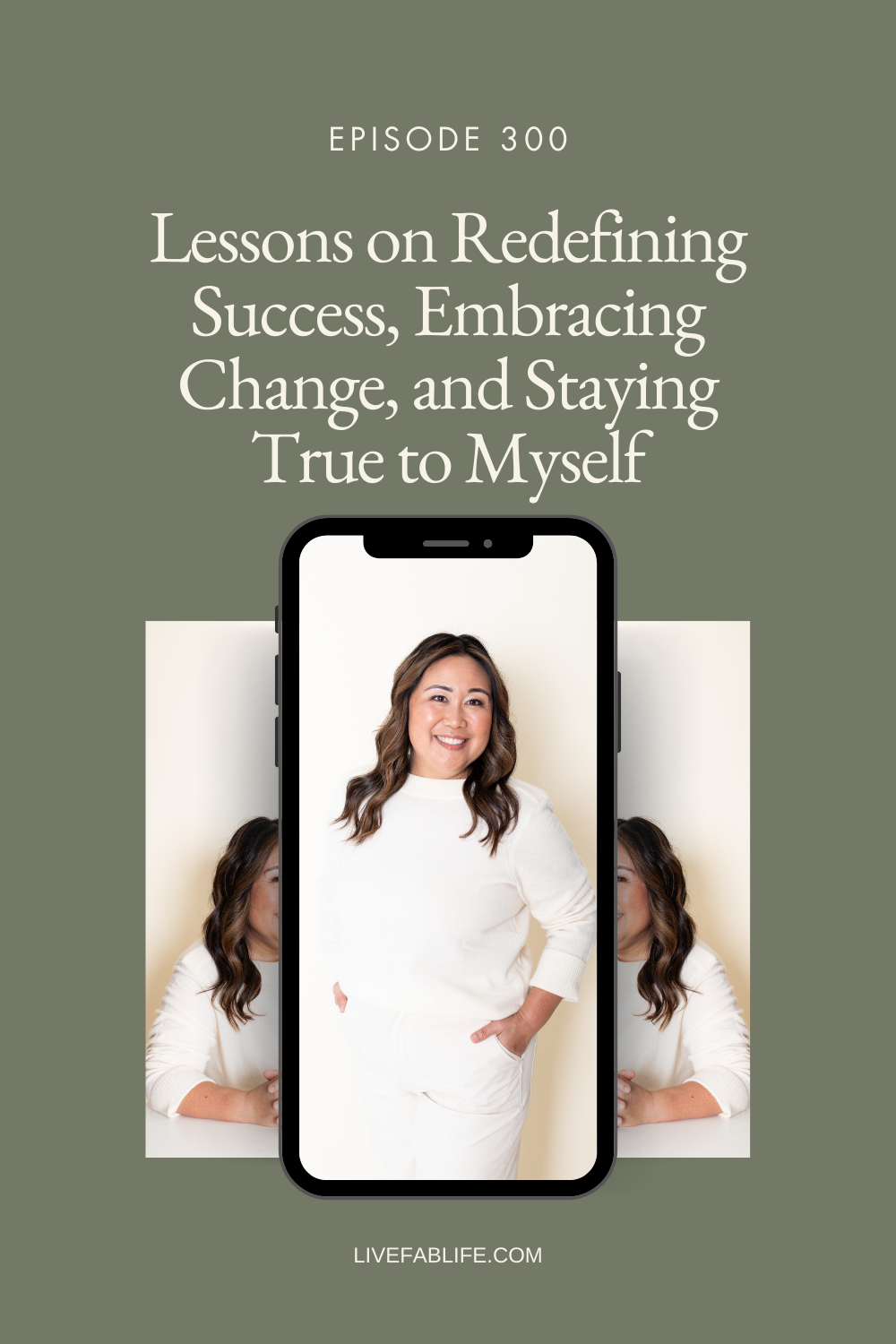Episode 207: On Having A Mental Authority with Janelle Turner
Human Design teaches us to embrace our individuality and that includes the best way to make decisions. While some of us are guided by our emotions, others are guided by intuition. To know what approach is best for you, look to your Human Design Authority.
We’re continuing on with our series on chatting with individuals on how they lean into their Human Design Authority.
In this episode, I’m joined by Janelle Turner. Janelle is a fellow Human Design Coach, fellow podcaster, and a Projector with a Mental Authority.
You’ll hear Janelle share:
How she first came to learn about Human Design
How at first, she was mistyped in her Human Design and how misaligned it felt
What the Mental (also called “Environmental” or “Sound Boarding”) Authority is
Walking that fine line between overthinking and practical ways she follows her Mental Authority
Listen to the Episode:
Mentioned in the Episode:
Episode 184: Your Human Design Authority - How Do You Best Make Decisions?
Episode 202: On Being A Reflector & Following A Lunar Authority
FREE GUIDE: Your Human Design, Discovered
Connect with Janelle Turner:
Janelle Turner’s website
Janelle Turner’s “Chatting Human Design” Podcast
Connect with Janelle on Instagram
Connect with Naomi:
Share the Episode:
“Human Design really shines the light on this is who you are. This is what you came here to do, and there’s no fixing about any of it.”
Read the Transcript:
Naomi Nakamura: Hello, my friends, and welcome back to The Live FAB Life Podcast. I am your host, Naomi Nakamura, and today, we’re continuing with our series on chatting with different people who have different authorities in Human Design. And today, I am joined by Janelle Turner.
Janelle is a fellow Human Design Guide. She teaches people about their Human Design, does readings for others, and she is also a Projector, with a Mental Authority, and that's what we're going to be talking about today.
You're going to hear Janelle share with us how she first came to Human Design, how she mistyped in her information and for a little bit, thought her Human Design was something that it wasn't. And then when she realized what it actually was, when she corrected her information, she talked about what it was like learning that she was a projector who has this mental authority or, as she explains, some call it an environmental authority, or a sound boarding authority.
And she explains what that is, and she talks about how she's come to learn, to lean into her authority, what process she takes and using it to help her make decisions. And she also talks about that fine balance that we all deal with, but especially those who have a mental authority, walking that fine line between overthinking and following your authority.
It's a very rare authority. Not a lot of people have a Mental Authority, and so I really, really enjoyed my conversation with Janelle. It was so insightful to me, and I hope it's insightful to you. So with that, let's get to the show.
Hi, Janelle. Welcome to the show.
Janelle Turner: Hi. Thank you so much for having me. I am so excited to talk about Human Design. I always get excited to talk about it.
Naomi Nakamura: Me too. I was referred to you by our mutual friend, Nadia. I'm doing a series where I'm interviewing people who have different authorities. We, who help people with Human Design and teach Human Design, we can talk about it, but to actually hear the experience of people who have different designs, I think, that's how I geek out on Human Design.
So you have a very unique design. I'm excited to dive into it. But for those who aren't familiar with you or who don't yet know you, can you introduce yourself and tell us who you are and what you do?
Janelle Turner: Sure. Hi, everybody. I am Janelle Turner. I came to Human Design almost four years ago, and I went through some ups and downs with it. But now, I do readings for people. I guess I call myself a Human Design Guide. It's something hard for me to pin down what I do. A lot of it has to do with my intuition and what I feel on the inside when I look at a person's chart. It's just like you said, I totally geek out and I see things.
I'm like, "Oh, I can't wait to talk to them about this part and this part." And I've found it really rewarding, but it's also very challenging to start a business like this that really has no other format to follow or other people.
I mean, there are people who do it, but it's pretty vague. And it's pretty much like this is what I offer. And I don't really do a whole lot of, I guess the word would be marketing. But when we talk about my Authority, it will make much more sense why it's hard for me to put myself out there in a consistent way and have that feel authentic for me. So, that is what I'm really into, is sharing other people's designs with them.
And I've been doing it for, I don't know, a year and a half now. And I don't get into things. I'm not get really obsessed and crazy into things. But when Human Design caught me, and I wasn't into Astrology or Numerology or any of that other stuff. I used to tell myself I was very anti “woo-woo”, because that stuff, it didn't make logical sense, which, as a Mental Projector, this is hilarious that I thought this way. That doesn't make sense.
Naomi Nakamura: Which we'll get to. We'll get to all of that.
Janelle Turner: Yeah. Yeah. It's kind of funny. But now, I'm much more open to things and it has really changed my entire life. And so that's why I really love sharing it with other people, because I've seen it do it for my life and for other people's lives. So, yeah.
Naomi Nakamura: Wonderful. Well, what is your Human Design? What is your Type, Strategy, Authority, Profile Lines? What's your design?
Janelle Turner: Hello. I am a 3/6 Mental Projector. A Mental Projector tells you my Type and Authority all in one, which most people can't do because, like you said, it's pretty [crosstalk 00:05:26].
Naomi Nakamura: It's unique.
Janelle Turner: Yeah. It's a unique Authority to have. So yeah, 3/6 Mental Projector here. Hello.
Naomi Nakamura: Well, when you were talking about having that struggle with knowing how to market yourself as a fellow Projector, I think so much of that goes back to our Type as Projectors and our Strategy of Waiting for the Invitation. But also, so much of what is taught about "How you're supposed to", and I'm using air quotes here, "do business and market your business", is so not in line with being a Projector.
Janelle Turner: No.
Naomi Nakamura: And so I have the same struggles. And for me, it just comes down to sharing what I love, which it sounds like what you're doing too.
Janelle Turner: Yeah. Yes it is. It's just, I'm working on the trust part and the patience part, because sometimes I'm like hurry up. I need this to be awesome more quickly.
Naomi Nakamura: So, you came to Human Design about four years ago and you've been working as a Guide, introducing Human Design to other people for, I guess, these almost two years. What brought you to actually do the work of being someone who works in the field of Human Design? What was it that made you think this is something I think I want to do to help other people?
Janelle Turner: Well, I first heard about Human Design on a podcast called The Balanced Blonde, and they were talking about it, and I was like, "Oh, fun. Let's do this little test thing. It'll be neat to see my chart." And then I saw it and I was like, This is really weird. It's a lot of information. [crosstalk 00:06:59]"
Naomi Nakamura: You're like, "I don't even know what this is supposed to tell me, this graph of a human. What is this?"
Janelle Turner: Yeah. It was very much over my head and I was interested in it, but not interested in it. And so for a few months, I kind of stayed in that zone and I was looking up people on social media to follow and really get into practicing and experimenting with my design. And I'd been into it for, like I said, about four months. And I was doing little fun readings for my friends and family. You're like, "What's your Type? Here you go." And you're giving them all the information, because it's super fun, as soon as you realize. And I was typing in this girl's birth time and I was like, "Ah, this birth time is one minute past my birth time," which is 4:39 PM. And when I went to put in her birth time, this was when mybodygraph.com did military time.
And I realized that her birth time said 16:40. And in my head, I saw my chart and I saw the information page. My birth time said 4:40. So I, for the first four months, was a 3/5 [inaudible 00:08:03] Generator, because I put my birth time in incorrectly. And I was into it, but I was not into it. I was very much, "Oh, do what I love, light myself up. Great." But the work part and the consistency part was very not. I was like, "It feels fun, but it doesn't feel right.
Naomi Nakamura: Like you.
Janelle Turner: Yeah. And so I had a breakdown when I realized I had done this incorrectly. And when I saw that I was a Mental Projector, I don't really know what to say. I feel like Human Design punched me in the face and I put all my books away, I unfollowed a bunch of people.
I'm like, "This is stupid. I don't like this. I'm not going back to this. This is silly." But that's when it happened, because I couldn't let it go at that moment. I tried and for a couple weeks, I was good. But then I was sneaking on to people's Instagram, like, "Oh, what cool meme did they make?" Or, "What are they talking about?" I was looking through my book. I would look at my chart and then not look at it, because it pissed me off. I was mad. And that's when I realized that this was something that I really wanted to share with other people, because the more that I looked at my Mental Projector chart, the more I knew I was looking at myself, but it was really hard to see. It was like a direct reflection of myself. The Generator, fake Generator chart, was really pretty and nice.
And I was like, "Oh, cool." And then I see this. And I'm like, "Ah, but this is right." And that's why it's so hard. And that's why it hurts, is because this is the right thing. And then I just got crazy with it.
Naomi Nakamura: I'm so glad you share that, because there's so many great things about Human Design and really feeling seen for the first time and feeling validated. But it also does, I don't want to say “force you”, but it shows you parts of yourself that have been on the periphery, that you maybe haven't been ready to look at. And once you do, it feels scary. It feels uncomfortable. But once you do it, feels pretty awesome too.
Janelle Turner: Oh, yeah.
Naomi Nakamura: It is very empowering and very freeing.
Janelle Turner: Yeah. I went from hating my design to loving my design pretty quickly. But at first, it was a big shift, man.
Naomi Nakamura: Well, I haven’t spent a lot of a time on this show talking about the Mental Authority. So can you share with us what it is? What makes someone have a Mental Authority, what it is, and I'm just going to ask the follow-up question now, because I have done readings for people who have been Mental Projectors. And some of them have come to me almost relieved because as they've started to do their own research, there are some people who say, "Well, you have no authority," because they don't recognize Mental Authority. So first of all, tell us what makes someone have a Mental Authority, what it is, and then did you have that experience, or how do you answer that when people say, "Oh, you don't have an Authority," because they don't recognize the Mental Authority?
Janelle Turner: Yeah. It's an interesting one. So, for anyone who's not familiar, if you look at a Human Design chart, there's nine shapes and each of those shapes is a center. And if you are a Mental Projector, you only have defined or colored in shapes top three, any of those combination. You obviously can't have one defined center, because it has to connect to another one. But Head, Ajna, throat. You only have definition in those areas and you have no definition of your centers below that. And because of that, we don't actually have it all inner authority. Some Generators have Sacral Authority, Emotional Authority, and those are directly associated with the Sacral Center, the Solar Plexus Center. But as a Mental Projector, we don't have any of that. And that's why it's often referred to as none, which, the first time I saw that, I was like, "Ah, well, that's BS, but okay."
It's also referred to as Sound Boarding Authority or Environmental Authority. And I like both of those terms, because I think it's both of those things. When it comes to our Authority, it's not as black and white as some of the other Authorities like Sacral or Splenic. There's not as many steps to follow and go, "Okay, this is where you pay attention to oh, did you hear that Splenic hit? Write those things down." It's more of sampling different environments and thinking about and processing whatever it is that you're working on, talking about it with somebody else, but not for their opinion, but to gauge how you feel as you are speaking to that person. For me, it really helps to see their face and to see how they react to the words that I say, because it's almost like a validation of, I know this is a good idea, but when I say it to you and I see that sparkle in your eye, I'm like, "Oh yeah, this is a really good idea."
Or, "I don't know about this one, and as I'm talking it over with you, I can tell I am not into this." So we'll back up on this, but you have to practice with it. I mean, Human Design is a huge experiment and this is a big part of it for Mental Projectors, is figuring out who you can trust the soundboard with, who won't try to give you opinions or advice all the time. And it's best to just say, "Hey, can I just talk to you and you don't say anything for a few minutes?"
Naomi Nakamura: Or understand that what I'm going to share with you, your opinion has no bearing. This is just for me to process it through.
Janelle Turner: Yeah, exactly. And people that are close to you, sometimes they're like, "Oh, well you don't care about my opinion?" It's like, "No, I love your opinion, but not right now. Right now, this is-"
Naomi Nakamura: Not in this situation.
Janelle Turner: This is an experiment I'm performing. So just sit there and listen. Don't talk. And my husband's pretty good at it now, and I have a couple of friends who are really good at it, but it's hard to find it and it's hard to trust because, like I said, this is kind of new, especially for me, to look to the outside. A lot of people talk about their inner Authorities and to me, it feels intuitive, like intuition.
For me, this is “out-tuition.” This is where I have to look on the outside of myself and use that to help me make decisions. I still trust my body and how I feel and it's still a part of the process, but I have to go outside. I have to have out-tuition at some point in the process. And speaking it out and being in different environments and thinking about the things and processing, it sounds kind of like, okay, well that's a lot of extra steps. Why don't you just make this choice? But this is the best way for me to gain clarity and for me to be confident. That was a big thing for me, was having confidence in my own choices and decisions. And I think before Human Design, I had a hard time with that, because I was always looking inside and going, "Okay. Trust yourself. Look inside. You can do this." And I didn't want have anything to do with anything on the outside. I wanted to trust myself and do everything myself. And now, going, okay, there's other people that you can bounce ideas off of and there's other places that you can go that will help you make these decisions, has been a huge thing. It was hard to get into at first, but it's really awesome. And it's a very unique authority to have it.
Naomi Nakamura: It is. It is. And it's exclusive to Projectors, but it sounds like the more you have your out-tuition, I love that word, the more you build your intuition.
Janelle Turner: Yes, you're correct. And that was hard for me, like I said, at first. It has to be for me, but it is. It's both. It's a combination of things. And when it comes to using my inner self and my inner guidance, that's really about the body and how I feel in my body, because I have no definition in the body. So it's inconsistent, and paying attention to how I'm feeling at that time, or where I am, or who I'm with is really important when I am making choices. And like I said, it gives me so much confidence and it helps me build trust in myself.
So you're totally right. Looking outside of myself has really helped me build my confidence and trust inside of myself.
Naomi Nakamura: You're taking the words right out of my mouth because to me and my experience, Human Design is all about, has been for me, all about learning how to trust myself. And I think that's the fascinating part is that we all have different ways of coming to that.
Janelle Turner: Yeah. You're totally right.
Naomi Nakamura: So you mentioned about your environment. Can you talk more about that? What role does your environment play and is it the physical environment that you're in or the people you're with, or what does that look like for you?
Janelle Turner: For me, I would say it's both. And when I'm having a hard time making a decision, or if I'm feeling a lot of anxiety or if I'm feeling stuck in a new way, it's best for me to go for a walk, to go outside, and be outside somewhere.
This has been something that I recently started to prioritize and make very important. Before, I was just like, "Oh, yeah. A walk would be nice," or I'll go outside with my dogs and take them out, but that's not the same. And being alone in your aura, especially when you have so many undefined centers, like I do, really helps. And I was very intimidated by it, because I thought I needed to do something. I was like, "Okay, I'm going to go outside in nature. Okay. Now what do I do to empty out all this energy? What's the process? Give me some steps here." And it's like, "No, Janelle. You just go out there and you go for a walk." And you don't get in here and try to go, "Okay, unpack all this and I'm going to process this while I'm here."
No. It's much more easy for me to go for a walk with no intention of doing anything, of just being out there. And then stuff pops in that I'm processing, and it's like, "Oh, his is a lot easier. Now that I'm thinking about this way, I can let this thing go." Or the other day I was on a walk, and there was this huge hawk that just caught this wind right above my head. And I was just staring at it for such a long time. And I said, this is why I came on this walk today, was that. It had nothing to do with anything in my mind. I needed to see that hawk, because it was so neat and it gave me a lot of energy.
Naomi Nakamura: Do you listen to music or anything when you go on your walks?
Janelle Turner: Not usually. Sometimes I'll listen to a podcast, but it's only for part of it. There has to be a part of the time where I'm not listening to anything and it's just me and no one else is there. I don't look at my phone. I usually have it, but I don't look at it. I just really try to be out there and not have any expectation of any sort of outcome, which is a big deal for Projectors.
Naomi Nakamura: Well, and also with the openness of your design, you want to be able to give yourself the space to maybe not be so easily influenced.
Janelle Turner: Exactly. I work part-time as a waitress, or a server, sorry, that's probably the correct term, but I like waitress. I don't know why. So I understand what it is like to be around a lot of people and a lot of happening.
And it's very exhausting. I'm trying to get out of it. It's really not good for my energy at all. So the people part of the Authority was really, to me, I was like, "No, I don't want to be it. I'm around people too much. I don't want to be around people and soundboard. No way." And I realized that it was very different than me going to the restaurant and being bombarded by people and voices and energy and woo than it was for me to choose to speak to one person about something, this person that I trust to listen and just let me bounce my stuff off of them. Soundboard is what it's called. But that's was one of the parts about the authority that really kind of messed with me was the people part. Because I'm around a lot of people part-time and I'm working with it.
I have Gate 34. So I have a lot of doing, like, I need to go, I need to go. And so I can really prioritize very well. I do my job very well. That's something thing that weirds me out, because I hate it. I'm very good at it. And I think a lot of it has to do with my design. And anytime I talk about waiting tables with other people who are in Human Design, if they're a Projector, they're like, "Oh, yeah. I was great at waiting tables, because I could guide people to get this and I was really good at prioritizing." And I said, "Okay, but did you empty out after all that? How long did you do this before you burned out?" Because it feels good in the moment to hijack all these people's energies and go, "Oh, yeah. Look at me go."
And that's what Projectors do. But to be aware that there is a limit and there is a point where you have to go, "Okay, I'm done." And I don't have control of that point. I am stuck there to the mercy of the restaurant until I can walk out the door and shake out my arms, which is what I normally do to get rid of people's energy. But yeah, it's interesting now to see that and to trust that it's not that I don't like this job. It's this is not good for me. This is not good for my energy.
Naomi Nakamura: How do you balance the sound boarding piece of having that with someone else versus the taking a walk and being alone in your decision-making process?
Janelle Turner: Oh, that's a good one. I would say that usually I will talk when the decision is still in the beginning stages or I'm not sure where I'm going to go with it. And for me, being able to talk out loud, especially with another person to soundboard off of, it's just literally ideas coming off my head. I have the 23, not the 43, but I get really weird ideas that take me a long time to [inaudible 00:21:51] say out loud. And so I talk in circles and that is at the beginning, usually, for me. It just helps. And when I need to be alone and when it's time for a walk, I know that that's this time where it's like, okay, something about this choice is going to happen. There's going to be a change here. You're going to make some sort of decision simply because that's where you're at now. And sometimes I will avoid the walk, because I know that that's when it's going to happen in here and when it's going to be like, okay, your choice is kind of made now, because I don't want to make the choice.
And that's something I've noticed a lot, is that I've gained so much awareness through Human Design. I see myself trying to circumvent certain things so that it doesn't hurt, so I don't have to feel the emotion, or I don't have to make the choice or anything like that. And I see it happening and I'm like, "Oh, I know what I'm doing." And I'll still let myself do it, because we're human beings and we have to navigate our own paths, and it doesn't really feel great to say, "Hey, don't do that. That's the wrong way to go about this decision. Don't do it that way." Because, it doesn't help. The awareness helps. Being it helps.
Naomi Nakamura: So much about obviously your Authority is the mental piece of it. So how do you balance that with overthinking?
Janelle Turner: Oh, my goodness.
Naomi Nakamura: Like I said, I've had a few clients who have been Mental Projectors and I'm like, I feel for you so much, because I know you're early in your Human Design journey and having to figure out that balance between following your Authority and not overthinking, which, by the way, is not good for anyone. How do you balance that?
Janelle Turner: Well, decisions aren't made in the mind. We know that, in Human Design. That's one of the things I think I heard early on and I loved that term. And then when I realized I was a Mental Projector, it was the same thing. I was like, "Wait. You're telling me not to do this, but this is how I'm supposed to do." It was very confusing.
Naomi Nakamura: Yes, I can imagine so.
Janelle Turner: I had a reading with someone, a Mental Projector read for me. And that was probably the most clarity I gained the quickest, because he told me so many bombs. "Janelle, 97% of Human Design information is not for you, because I am 3% of the population." So most Human Design information has nothing to do with me. It's not for me. It's for the other. And that was like, "Janelle, the advice you give other people, you don't have to follow yourself." That blew me away, because I have so many things to tell people to help them with what they're trying to do and gain clarity that I think I have to do those things too. It's like, oh, if I'm telling them to do this with their life, then I have to be able to do it.
Naomi Nakamura: Well, that's how we've been taught our whole lives, right?
Janelle Turner: Exactly. Yes. That was one of the biggest bombshells for me, was knowing I could give advice and not follow it. I was like, "Yes. That's amazing."
Naomi Nakamura: Because it's not meant for you.
Janelle Turner: No, it's not meant for me. So I have a undefined Head, defined Ajna, and defined Throat. So I get real caught up in the spiral of worrying. Worry is the big thing for me in my head center, and thinking about things that don't matter. That really can get me. I have gotten pretty good at when I can tell I'm spiraling and going, "Does this thing matter? Are you thinking about something that matters?" And that question really helps me. And then I put my focus on something else. Sometimes I feel like I'm a child or a small animal, because I'm like, "Okay. Focus on this shiny thing and you'll stop circling in your mind." So Mental Authority or Sound Boarding Authority, Environmental Authority, however you want to call it, has nothing to do with mental anything. And that's where it gets caught up is the name is not really a great name, Mental Projector, because we are not here. We're not supposed to make decisions in our minds. For me, my Ajna helps me to logic my way into things that are good for me. And I already know they're good for me, but I need proof. I need something to show me so I will let my Ajna go, "See? This is why this is good. This is why it'd be great to be friends with this person or to try this new thing." I prove it to myself, and I did that with Human Design. I looked at all these things and said, "Yeah, it's pretty woo-woo, but look at this. Look at how right this thing is. How?"
And that's the part of it where I let it fly. I let the mental stuff go, is conceptualizing things and deciding if something is true for me or not. I let myself use logic for those things, because it helps me to feel secure in my choice.
Naomi Nakamura: To trust.
Janelle Turner: Yeah, to trust. Exactly. Exactly. But the main thing with Mental Projectors is it's never going to turn off. Just like you said, there's a lot of Mental Projectors who try really hard to turn it off, who say, "How do I get it to stop? How do I get my mind to stop working, to stop thinking?" And it won't. That's it.
Naomi Nakamura: So how do you manage that then, knowing that and accepting that it doesn't turn off? What are some things you do to help, I don't want to use the word cope. That's the word that's coming to mind, but how do you manage it all?
Janelle Turner: I have a daily meditation practice, which can be hard, especially for Mental Projectors, because you think you're not doing it right if you've still got stuff going on in here. But I've had a daily meditation practice for over a year and I still have lists going through my head and to-dos that will pop up. And that's not the point of it. The point is the consistency of it, for me, is very helpful. And allowing myself to do it for really short periods of time or really long periods of time, whatever I've got, and being okay with that. If I meditate for two minutes, I meditated that day the same as if I meditated for 20 minutes the day after.
And I know that I got it in, and it really does help. It quiets it. It doesn't shut it off, but it quiets some of the stuff. Being outside in nature is a big one for me. That helps a lot. And just being aware. Being aware when your mind is spiraling, especially a lot of people who have dealt with anxiety, because for me, it's what it is. It's anxiety. That's what it feels like. That's how it presents itself in my body, is anxiety. I also have an undefined spleen. So, that is fear, and I'm learning to discern the two. But anxiety is different for me. And to just be aware that you are thinking about something for an exorbitant amount of time or that you're worrying about something that you have no control over, being aware of it, and not trying to do anything about it, not trying to fix it or stop it.
Naomi Nakamura: And I think what you just said is so on point, just the awareness part, just being able to differentiate and understand what it is that you're feeling right now, because imagine feeling that kind of anxiety, that kind of, it doesn't turn off, without any context or knowing your Human Design. Oh my gosh, what is that like? Thinking about how that would be for someone who doesn't have context of understanding why this is happening or why it's happening to them, and not someone else.
Janelle Turner: Yeah, you can feel like something is wrong with you or that you don't know how to process things correctly, which with the conditioning that we all have, it could be very true. But I think so often we try to manage our behaviors, fix them, change them, stop them, do something about them, because we don't like them, or we think that they're wrong in some regard.
And for me, letting go of that, needing that, has been very helpful. Still being aware, still seeing it happen, not pretending like everything is okay, but knowing, saying, I don't have to make myself stop having that negative thought. Right? I'm not a bad person or I'm not lazy because I didn't do this thing right away or any of this.
Naomi Nakamura: Or I need to rest every day. It's so [inaudible 00:29:55].
Janelle Turner: Yeah. Yeah. And like you said, to put real significance on those things and know that that's a part of what makes you run smoothly as a human being. Those are the parts for me that I recognize with people, is there's in such a hurry to change and to fix parts of them. And I think Human Design really shines the light on this is who you are. This is what you came here to do, and there's no fixing about any of it.
Naomi Nakamura: There's no fixing, but there's also a lot of practicality about it too, that I find very helpful.
Janelle Turner: Oh, yeah. Me too. I love practicality. Come on. I'm a Mental Projector.
Naomi Nakamura: Well, Projectors in general, right?
Janelle Turner: Yeah. Yeah. We like logic and we like things to make sense.
Naomi Nakamura: So that we can make them better.
Janelle Turner: Yeah, exactly. So we can tell you without you wanting to know how to make it better.
Naomi Nakamura: Exactly. So that we can tell you how to do it, but we're not going to actually do it for ourselves.
Janelle Turner: Exactly. Yeah. Pretty much.
Naomi Nakamura: Yeah. Well, thank you so much. This is really a good conversation. I'm so glad we had this chat and you've really given me a lot of insight into having this Authority, this Environmental, Sound Boarding, Mental Authority. Like I said, I can speak about what it is, but hearing it from someone who's design it actually is, is really quite powerful. So all that being said, how can people find you and connect with you?
Janelle Turner: Well, I'm @janelleturnerhd on Instagram. That's probably the platform I enjoy the most social media wise. I also offer Human Design readings on my website, janelleturner.net. And that's where you could find my podcast, Chatting Human Design. I love this format, defined [inaudible 00:31:35]. It's really a lot easier for me. This kind of content creation is much easier for me.
Naomi Nakamura: Same. I had a personal blog way before Human Design. It was like nails on the chalkboard, writing. And then when I sit on my podcast, I'm like Defined Throat it. I'm like, oh yeah, this is the way to go.
Janelle Turner: Exactly. Exactly. And when I first started it, I was very worried. I'm like, "Am I going to have enough to say? Is this going to be okay?"
And sometimes now I'm like, "Janelle, stop talking. Let the other person talk, please." So yeah, that's where you can find me. And I think I looked it up before I came on here, because I am crazy, but I think I coined the term out-tuition. So if anyone hears it, it's like intuition, but for the outside.
Naomi Nakamura: You need to trademark that word.
Janelle Turner: I know. I'll make some sort of visual Post-it that I will accept and put it on social media. Thank you.
Naomi Nakamura: And I will link to all of these things in the show notes for this episode, for those who want to go there and get your links.
Janelle Turner: Thank you. Thank you. And thank you so much for having me on. This was super exciting and fun. And I think it's really great, this series that you're doing, especially for some of the lesser known authorities, because it's hard for us to find things to relate to. So if any Mental Projector hears this, I'm really happy that you're listening and I say hello.
Naomi Nakamura: Yeah. I mean, I've said time and time again, everything I do in this podcast, I do selfishly, because I want to learn more. So, thank you for sharing. I appreciate it so much.
Janelle Turner: Oh, you're welcome.
Naomi Nakamura is a Health x Human Design coach who’s creating a healthier society through aligned energy.
She blends a bespoke mix of Functional Nutrition and Human Design to help others shift into alignment to leverage and correctly manage their energy to support their body, mind, and spirit.
She believes that when we embrace our authenticity and lean into our bio-individuality, we naturally live a life of freedom, empowerment, and optimal health.
Naomi resides in the San Francisco Bay Area and can often be found exploring the area with her puppy girl, Coco Pop!
Connect with Naomi on: Instagram
| Pinterest
